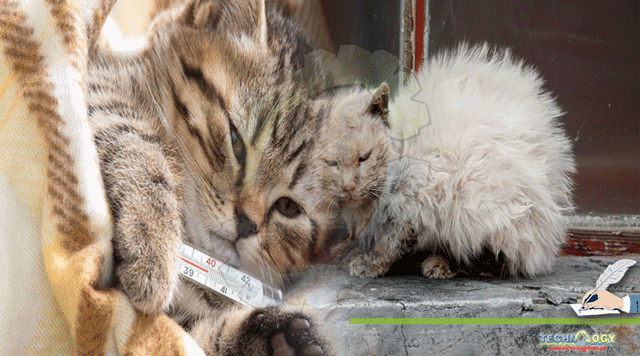Cats are also prone to many diseases, just like human beings. Cat flu is approximately similar to human flu. Many cat owners show concerns and want to know about the cat flu, its pathogenesis, causes, mode of transmission and management.

Authors: Zoha Naeem, Dr. Muhammad Ashraf
Here, we will have a brief overview of feline flu under the light of scientific literature. Cat flu is medically known as Feline upper respiratory system infection. This is a multifactorial and contagious condition that is caused by a number of viruses and bacteria. Remember, viruses are a major causative agent of cat flu. Common viruses involved in cat flu are Caused by Feline Calcivirus (FCV) and Feline Herpes virus-1 (FHV-1) This affects the cats of all ages and breeds. Signs and symptoms may vary from one cat to another one. However, miscellaneous causes include:
- Bordetella infection
- Mycoplasma infection
- Feline chlamydiosis
cat flu is not caused by influenza viruses. These viruses mainly cause human flu (cold).
Transmission:
This is a contagious condition that spreads quickly from one cat to another cat through direct contact (with infected cat’s saliva, nasal secretions, tears, other droppings and Indirect mode of transmission includes, feeding equipment, water bowls, playing tools, bedding or even human clothing and hands (person who has touched an infected cat).
Zoonotic potential:
There is no scientific evidence of its zoonotic importance. Cat flu is totally specific to cats and doesn’t transmit from cats to human beings.
Signs and symptoms:
Signs and symptoms of cat flu are nearly alike to human flu. Some key signs and symptoms are Sneezing, watery eyes, difficult breathing (Dyspnea), runny nose, loss of appetite (Anorexia), high temperature, ulcers in mouth and around eyes, coughing and dribbling. cat may show mild to severe symptoms depending upon the severity of disease. Remember, severe symptoms can lead to life threatening conditions such as pneumonia, lung damage, eye damage and other dangerous complications. Kittens and old aged cats show the worst symptoms because of their poor immune system.
Diagnosis:
Diagnosis is made upon history, clinical signs and symptoms and lab testing. It is important to note that cat flu is not always threatening; it can go away on its own. But it is necessary to stay in contact with a registered veterinarian. There are many medical conditions which confuse cats with flu such as chronic bronchitis, asthma and other respiratory diseases. Your vet can confirm the diagnosis by taking the nasal/throat swab of your cat and testing the virus strain in the lab.
Treatment and precautions:
(Precaution is better than cure)
- As there is no specific treat for viral diseases.
- Only strict precautionary measures can save the life of your beloved cats.
- Vaccination is available for cat flu.
- Being a responsible owner, you should get your kitten vaccinated against cat flu as early as possible (consult your veterinarian).
- Supportive therapy includes various supplements, antiviral agents and antibiotics (to stop secondary bacterial infections) and fluid therapy.
- Your vet can recommend you the best possible cure and precautionary measures.
- Quarantine is a very crucial thing to limit the spread of cat flu to other cats, if you have multiple cats in your home.
- Keep the infected cat isolated and wash all the feeding equipment carefully. Give humidifiers and a soft diet to your cat.
- It is important to note that cats with mild flu recover within five to 10 days normally. But severe cases take approx. six weeks to go away.
- Cats with herpes virus 1 become the carrier for the rest of their life. Although, feline calicivirus flu is not that much worse but cats remain carriers for up to a few months to years.